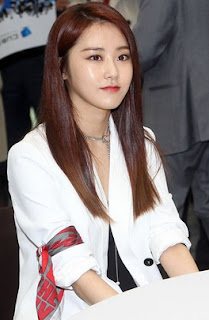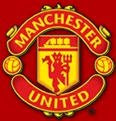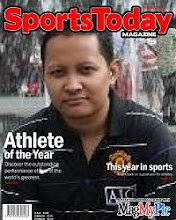Seoul, officially the Seoul Special City, is the capital and largest city of South Korea. A mega city with a population of over 10 million, it is one of the largest cities in the world.

The Seoul National Capital Area is the world's second largest metropolitan area with over 24.5 million inhabitants, which includes the Incheon metropolis and most of Gyeonggi province.
Nami Island


Namiseom is a tiny half-moon shaped island located in Chuncheon, South Korea, formed as it was inundated by the rising water of the North Han River as the result of the construction of Cheongpyeong Dam in 1944. It has drawn 1.5 million visitors a year on average.
Dongdaemun Market

A major pulsepoint of the city since 1905, Dongdaemun Market may be the best place to go to get a genuine feel for everyday life in crazy Seoul. The market is simply gargantuan and covers 10 city blocks. Over 30,000 shops and 50,000 manufacturers call Dongdaemun home.
Jongmyo Shrine

Jongmyo is a Confucian shrine dedicated to the memorial services for the deceased kings and queens of the Korean Joseon Dynasty. According to UNESCO, the shrine is the oldest royal Confucian shrine preserved and the ritual ceremonies continue a tradition established since the 14th century. Such shrines existed during the Three Kingdoms of Korea period but only the shrines for the rulers of Joseon remain. The Jongmyo Shrine was added to the UNESCO World Heritage list in 1995. (http://en.wikipedia.org/wiki/Jongmyo_Shrine)
National Museum of Korea

The National Museum of Korea is the flagship museum of Korean history and art in South Korea and is the cultural organization that represents Korea. Since its establishment in 1945, the museum has been committed to various studies and research activities in the fields of archaeology, history, and art, continuously developing a variety of exhibitions and education programs.
In October 2005, the museum opened in a new building in Yongsan Family Park in Seoul, South Korea. The museum contains over 220,000 pieces in its collection with about 13,000 pieces on display at one time. It displays relics and artifacts throughout six permanent exhibition galleries such as Archaeological Gallery, Historical Gallery, Fine Arts Gallery I, Donation Gallery, Fine Arts Gallery II, and Asian Art Gallery. It is the sixth largest museum in the world in terms of floor space, now covering a total of 137,201 square metres (1,480,000 sq ft).
(http://en.wikipedia.org/wiki/National_Museum_of_Korea)
Changdeokgung Palace Complex

Changdeokgung, also known as Changdeokgung Palace or Changdeok Palace, is set within a large park in Jongno-gu, Seoul, South Korea. It is one of the "Five Grand Palaces" built by the kings of the Joseon Dynasty. Because of its location east of Gyeongbok Palace, Changdeokgung, with Changgyeonggung, is also referred to as the East Palace. The literal meaning of Changdeokgung is "Palace of Prospering Virtue". (http://en.wikipedia.org/wiki/Changdeokgung_Palace_Complex)
War Memorial of Korea

Opened in 1994, the largely museum-like War Memorial of Korea in Yongsan-dong, Yongsan-gu, Seoul, South Korea offers visitors an educational, yet emotional experience of the many wars in which Korea was involved. Many documents and war memorabilia have been collected and are displayed. The War Memorial has several display rooms and an outdoor exhibition center displaying military equipment. (http://en.wikipedia.org/wiki/War_Memorial_of_Korea)
Gyeongbokgung Palace

Gyeongbokgung, also known as Gyeongbokgung Palace or Gyeongbok Palace, is a royal palace located in northern Seoul, South Korea. First constructed in 1394 and reconstructed in 1867, it was the main and largest palace of the Five Grand Palaces built by the Joseon Dynasty. The name of the palace, Gyeongbokgung, translates in English as "Palace of Shining Happiness." (http://en.wikipedia.org/wiki/Gyeongbok_Palace)
Namsan Park

Namsan (lit. "South Mountain") is a 262-meter peak in the Jung-gu district of south central Seoul, South Korea. Although known as Mount Mongmyeok, in the past, it is now commonly referred to as Namsan. It offers some hiking, recreation and views of downtown Seoul's skyline. The N Seoul Tower is located on top of Namsan.
The mountain and surrounding area is a public park maintained by the city government. It is a popular spot for a panoramic view of Seoul. It is also the location of a smoke signal station called Mongmyeoksan Bongsudae' (Mongmyeoksan Beacon Tower), which was part of an emergency communication system during early times until 1985.
Dongdaemun & Namdaemun

Dongdaemun known as Dongdaemun Market includes upmarket shopping districts as well as several underground shops, stalls and markets that are open for much of the day. It has grown into the largest shopping center in South Korea. In 2007, the City of Seoul started Dongdaemun Design Project (DDP), to renovate what used to be Dongdaemun Stadium (an amateur baseball park). With world-famous architect Zaha Hadid's design, when completed this structure is expected to be one of the most notable landmarks in downtown Seoul.

Namdaemun Market is a large traditional market in Seoul, South Korea. The market is located next to Namdaemun, the "Great South Gate," which was the main southern gate to the old city
Cheongjechong River

This used to be a highway, until the city officials tore down the highway, re-routed the traffic and replaced it with a canal. Before the highway, it used to ba a river with slums beside it. Hugely popular with the locals, the river is worth a visit.
DMZ

The Korean Demilitarized Zone is a strip of land running across the Korean Peninsula that serves as a buffer zone between North and South Korea. The DMZ cuts the Korean Peninsula roughly in half, crossing the 38th parallel on an angle, with the west end of the DMZ lying south of the parallel and the east end lying north of it. It is 250 kilometres long, approximately 4 km (2.5 mi) wide and is the most heavily militarized border in the world. The Northern Limit Line, or NLL, is the de facto maritime boundary between North and South Korea in the Yellow Sea and the coastline and islands on both sides of the NLL are also heavily militarized.
(http://en.wikipedia.org/wiki/Korean_Demilitarized_Zone)
The De-Militarized Zone at the border of North and South Korea allows you peeks into the barren North Korea. There is also a tunnel that you could walk and climb. Strongly recommended. Technically, they are still at war.
Insadong

Insadong is a dong, or neighborhood of the Jongno-gu district of the South Korean city of Seoul. The main street is Insadong-gil, which is connected to a multitude of alleys that lead deeper into the district. At one time it was the largest market for antiques and artworks in Korea. Highly recommended, Insadong brings you back to "old Korea". The shops there are mainly "cultural shops" and sell things like traditional costumes, or avant garde mock traditional costumes. Insadong is about nostalgia. Oh, and there is the only Starbucks in the world in non-english!
COEX Mall

COEX Mall is across the street from Bongeunsa Temple but could not be more dissimilar. The behemoth underground mall provides a perfect glimpse into hyper-modern Korea. Seoul is a city on the cusp of every digital and technological trend and COEX Mall is a wonderful vantage point from which to take it all in. Bring comfortable shoes however. The mall features over 250 commercial shops, 800 restaurants, a multiplex, aquarium, Kimchi Field Museum, Game Park and receives over 100,000 visitors on weekdays






























